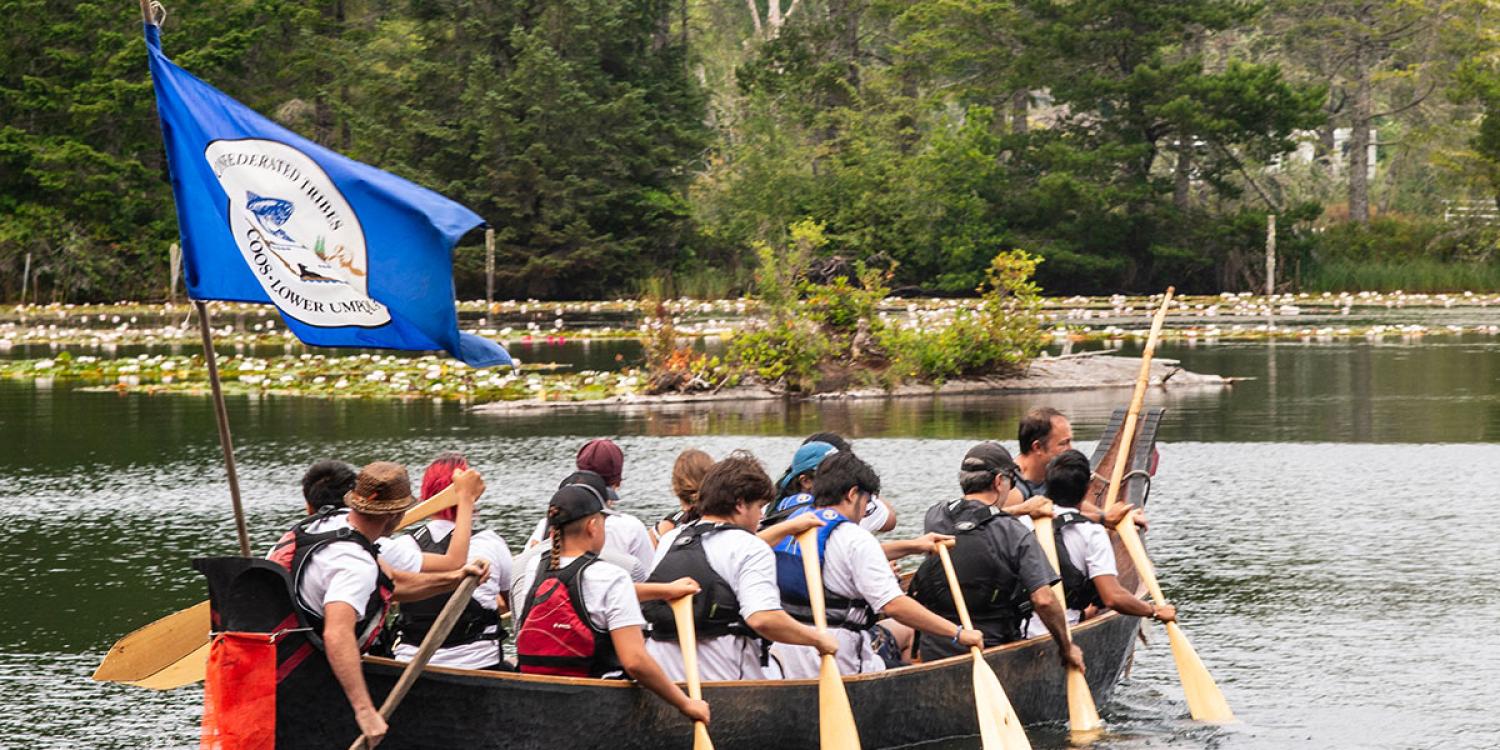
Hispanic migrant and Indigenous students are underrepresented in natural science careers and higher education. To change this, Oregon Sea Grant helps organize annual summer camps that aim to pique these teens’ interest in the natural sciences and empower them to attend college. The free camps, which are for high school students, are an example of how Oregon Sea Grant is engaging with partners to support the development of a robust and diverse workforce.
The program, which is called Environmental Leadership for Youth, started in 2018, largely for Hispanic students. The Meyer Memorial Trust financed the first two years, and the Oregon Department of Education began supporting it in 2021. That same year, the program expanded to include Indigenous teens based on input from focus groups and surveys asking members of the Confederated Tribes of Siletz Indians about barriers to college enrollment.
That effort was funded by $10,000 from Oregon Sea Grant and a New Beginnings for Tribal Students grant from the U.S. Department of Agriculture. The result was the development of a culturally appropriate curriculum for the Indigenous camp. Today Oregon Sea Grant coordinates the Indigenous camps in partnership with the Confederated Tribes of Coos, Lower Umpqua and Siuslaw Indians (CTCLUSI) and Southwestern Oregon Community College.
As of the end of 2023, about 90 Hispanic students and nearly 30 Indigenous students had attended the camps, said Guillermo Giannico, Oregon Sea Grant's fish ecology Extension specialist who helps organize the camps. At least eight of the Hispanic students and four of the Indigenous students have since gone on to college, he said.
Over the course of a week, campers take field trips, conduct lab work, sleep in the dorms at OSU, tour buildings on campus, get face time with professors, build camaraderie on a challenge course, snorkel in a river, and learn about environmental science careers, financial aid and resources for navigating college.
The camps are offered separately to each group and are designed with their individual cultural characteristics in mind. For example, the camp for Indigenous students is infused with Indigenous knowledge, and Indigenous speakers and mentors lead many of the activities. Topics have addressed forestry practices, sea otter restoration, ethnobotany and management of land using controlled burns. Activities include paddling CTCLUSI’s hand-carved cedar canoes and gathering over a meal at the Kaku-Ixt Mana Ina Haws cultural center at OSU to honor the space and listen to elders, college students and professionals.
One of the hopes is that the Indigenous students will go on to careers as natural resource managers for tribes, according to Giannico.
At the camps for migrant youths, the teens tour the Centro Cultural César Chávez at OSU, raft the Willamette River and visit habitat restoration sites.
“The camp is also a way to get migrant students into the outdoors, see fish in a river and see the valley from a new perspective," Giannico said. "We want to make them aware of ecological processes and introduce them to careers related to them.”